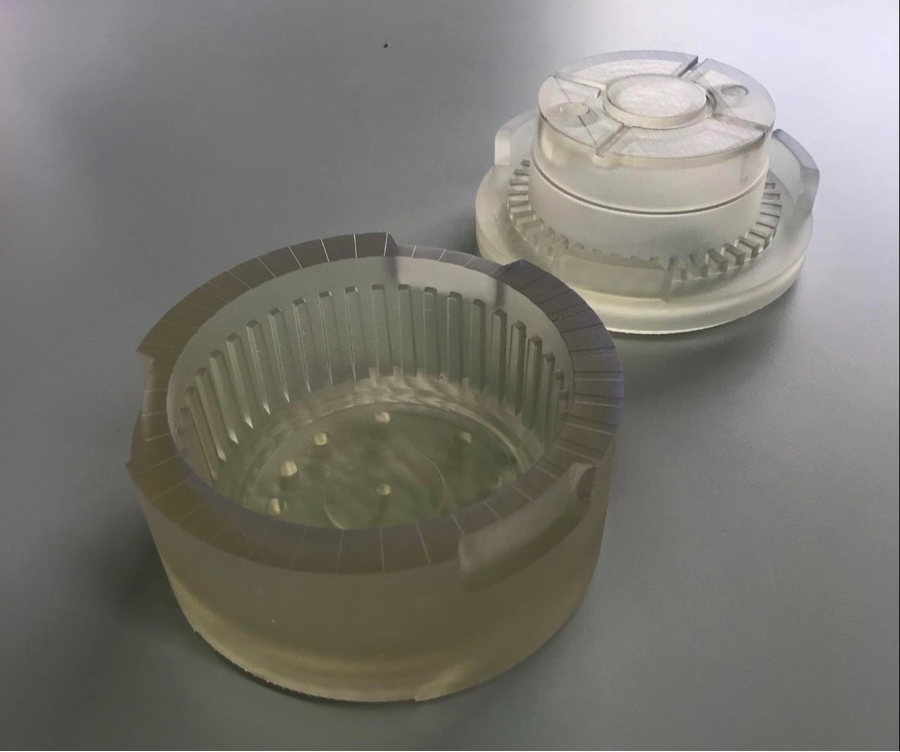This article is a reprint from the Formlabs blog.
So far we’ve covered some metal casting basics, as well as direct investment casting in our blog series on casting. Today we are moving to indirect investment casting.
The process of making patterns from molds or tooling is referred to as indirect investment casting because it requires creating molds for producing the patterns in addition to final investment molds.
Rigid molds for wax (often referred to as tools) are commonly fabricated by machining aluminum or steel. Machined metal molds cost thousands of dollars to produce and take weeks of machining and polishing work before first shots can be run and pattern parts evaluated within a casting process. By directly printing tooling, engineers and designers can reduce the time between concept and first tests from weeks to a matter of days.

A 3D printed mold in Clear Resin for wax injection.
Molds for producing wax patterns can be printed with High Temp Resin. For optimal surface finish of molded parts, treat the interior surfaces of the mold by sanding and polishing for a smooth look, or bead blasting if a uniform matte look is desired.
To ensure the final cast parts are dimensionally accurate, compensate for shrinkage by scaling up the printed mold. The exact shrinkage of the wax and the casting process can be obtained from supplier specifications.
While molded pieces must follow design rules for moldability (e.g., no undercuts, draft is beneficial, etc.), you can achieve increased pattern complexity by using assembly jigs to combine multiple components into a single structure.
Next week we will wrap up this discussion on casting with an overview of sand casting. Please stay tuned.







Leave A Comment